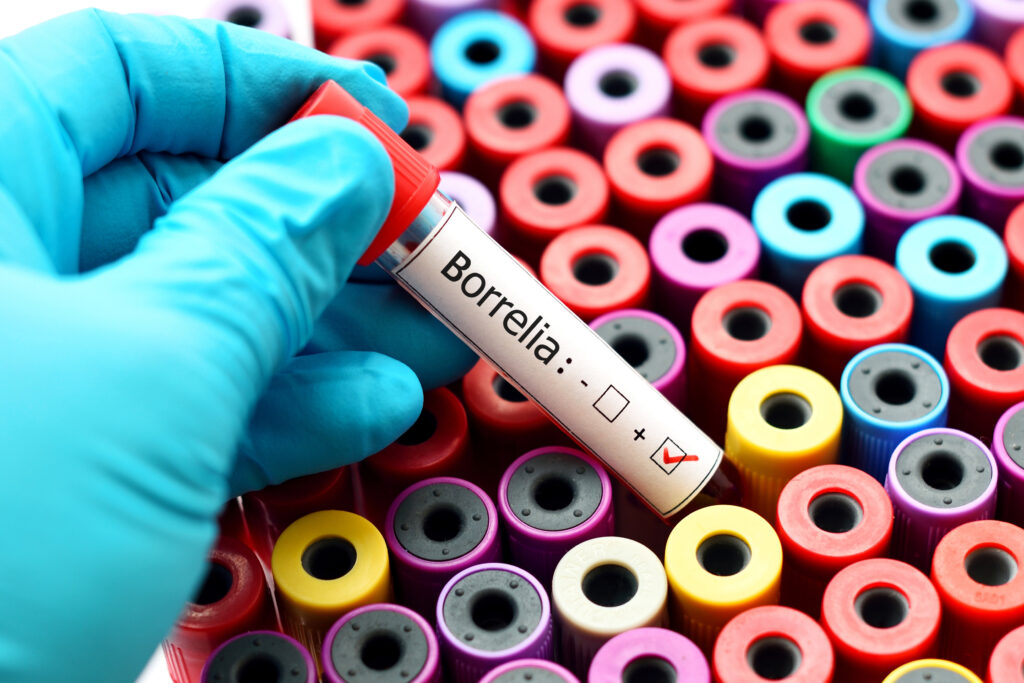The ever-present question those with tick-borne illness get asked by healthy friends, family, and acquaintances is: “Why is it so hard to treat?” The answer is layered, but one aspect of that answer lies within the very early stages of the disease: getting tested (or the failure to get the proper test, or the failure to get tested at all, or the failure to get an accurate test result…you get the idea) for Lyme and co-infections. Delays in diagnosis can lead to a disseminated, very hard-to-treat infection.
So let’s break it down. But not too much.
Current Recommended Lyme Disease Testing and Other Antibody Tests
The test sequence that was first recommended (and is still outlined as the recommended test by the CDC) involves a patient first having an ELISA test, and then, if it is positive or equivocal, having a Western blot done. There are plenty of resources (including on the Project Lyme website) that go deep into the science and get a lot more technical with the differences between all of the tests that we’ll touch on today. Since that’s the case, let’s make it easy and just stick with being a little technical.
Most Lyme and co-infection tests look for the presence of antibodies, meaning your body has started to mount a defense against any pathogens that have entered your system. If you are making antibodies against Lyme or, say, Bartonella, then it’s assumed you have these infections in your system. The problem is that it takes a few weeks for these antibodies to get into the bloodstream, so if you’re tested too early, your body is not mounting a strong immune response, or the test is not detecting the antibodies to the right strain, you may get a false negative. Also, many people with Lyme and co-infections are misdiagnosed with autoimmune diseases and may be immunosuppressed at the time of testing. Suppressing the immune system will lead to a blunted immune response and could also lead to a false negative result, which is life-altering for a patient suffering from these infections.
Furthermore, the ELISA just isn’t that accurate even in the best cases (around half the time), and even if you’re lucky (or unlucky) enough to make it to the second tier, the more specific test (the Western blot), there is a massive discrepancy amongst experts regarding what antibodies equate to a positive result on a Western blot. Many Lyme specialists (often referred to as Lyme-Literate Medical Doctors, or LLMDs) recommend laboratories such as IGeneX and Vibrant Wellness that test for multiple strains and use alternative criteria for positivity, thus increasing sensitivity, which means you are less likely to have a false negative result.
Direct Detection Tests
While IGeneX or Vibrant Wellness are better antibody options, LLMDs sometimes also recommend direct detection tests that are more specific, and, unfortunately, more expensive, called PCR or antigen tests, that look for bits of the pathogen’s DNA in your blood. Generally speaking, the LLMD-recommended antibody tests are more sensitive (decreasing the chances of a false negative). On the other hand, direct detection methods are more specific, without cross-reactivity to other infections, and more indicative of an active infection. Direct detection tests may also be more accurate early in infection (before you mount antibodies as part of an immune response) or in those who have an immune deficiency. The main companies that run PCR testing are IGeneX, Galaxy Diagnostics, TLab, and MDL. Galaxy Diagnostics just came out with a new test called BBB Direct Detect, which can test for Borrelia, Babesia, and Bartonella, that surpasses other tests that look for the presence of individual strains.
The good thing about getting LLMD-recommended tests (whether antibody or direct detection) is that you can get tested for more than JUST Lyme disease. The multitude of infections that can come along with a tick bite are all infections that can be tested for with one of these companies.
As stated above, if it wasn’t complicated enough, each infection has multiple strains. So testing for Bartonella, for example, is complicated if there are dozens of strains. One common laboratory that anyone might go to to get a basic blood draw from their family physician, should that doctor run a Bartonella test through that lab, will only test for ONE or possibly TWO strains of Bartonella. That person, then getting a negative test when they simply have a different strain of Bartonella, can be sent on a road that is all too common to those with Lyme disease today. A road of misdiagnoses, confusion, denial of symptoms, and trauma. Getting the testing right is integral to stopping this tragic sequence of events.
On a positive note, the aforementioned laboratories are constantly updating their testing methods to make them more sensitive and more specific, thus helping more people to get properly diagnosed. These tests are ordered by a physician, and you can contact the companies directly for more information regarding their tests.
The bottom line for those experiencing symptoms is, thankfully, that there are tests out there today that can accurately diagnose tick-borne illness, which is the first step in getting better.
Key Takeaways
If you need help finding a provider who can help you get tested and treated for suspected tick-borne illness, check out Project Lyme’s Medical Provider Search today. When using a specialty lab to test for Lyme disease and co-infections, be sure to submit your insurance information or request a super-bill to submit to your health insurance. Depending on the coverage and laboratory, you may receive reimbursement in whole or in part. For more guidance, see this resource.



